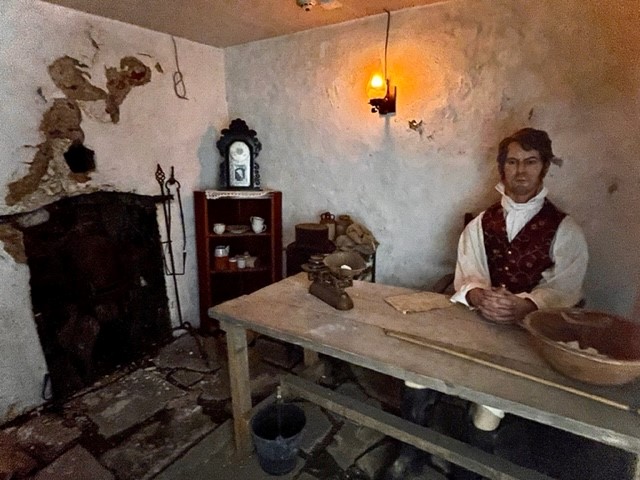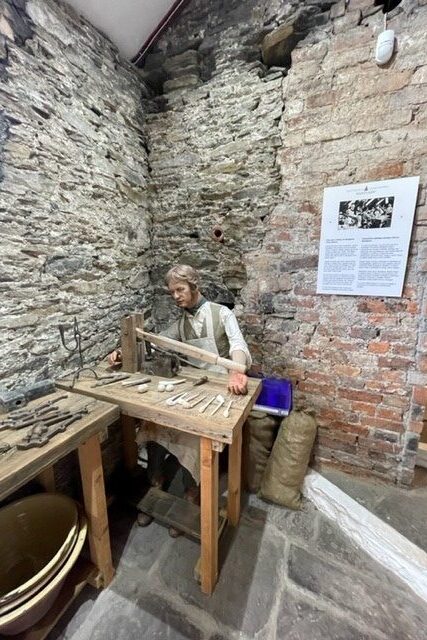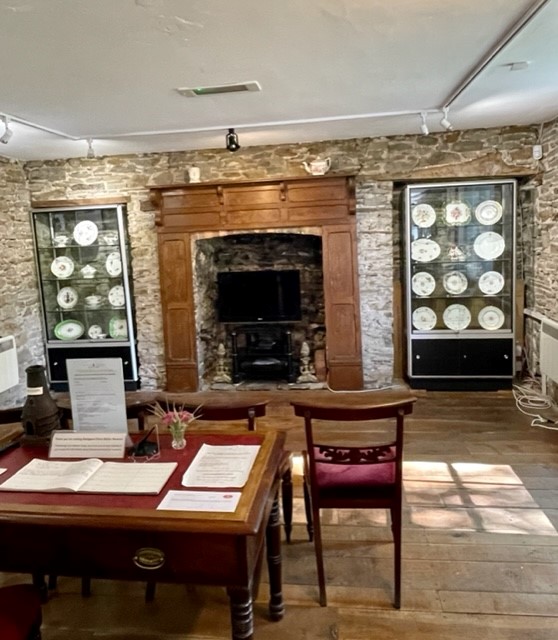History of Nantgarw China Works
Nantgarw China Works is one of the most important industrial heritage sites in Wales. Between 1813-1814 and again between 1817-1820 the finest porcelain in the world was produced here by William Billingsey and Samuel Walker. Due to a very low firing success rate and expensive production costs success was short lived. Billingsley and Walker left Nantgarw in 1820 leaving a gentleman named William Weston Young with responsibility and debts for the site. In order to recover some of his losses Young bought the remaining stock and equipment and invited enameller and decorator Thomas Pardoe from Bristol to decorate the porcelain. Thomas Pardoe remained at Nantgarw until his death in July 1823 and was succeeded by his son William Henry Pardoe. Over the next ten years the factory remained closed while William worked in Cardiff as a China and glass enameller as well as a seller of clay pipes.

In 1833 William Henry returned to Nantgarw, building new kilns. He began manufacturing salt glazed stoneware bottles and brown glazed earthenware. The factory also made large quantities of clay pipes. Upon William’s death in 1867 the business was taken over by his widow and younger sons including Percival Pardoe. Percival continued to run the factory until his death in 1920. By this time the introduction of cigarettes had decimated the market for clay pipes and the factory closed.

What Happened Next?
The descendants of the Pardoes continued to live in Nantgarw House. During later years it was run as a teashop and B & B. In the 1970s the house and former China Works site were abandoned and fell into disrepair. It was bought by the Council in the 1980s and since 2007 it has been leased, run and managed by the Nantgarw China Works Trust.
What is Porcelain?
Porcelain refers to a wide range of ceramic products that have been fired at high temperatures to achieve vitreous (glass like) qualities such as translucence. Porcelain is usually white or off-white and can be found in both glazed and unglazed varieties.
Types of Porcelain
There are two main types of porcelain, hard-paste and soft-paste.
Hard-paste porcelain needs to be fired at a high temperature. It is hard and can appear slightly grey in colour with only a slight translucence. It is this type of porcelain that was made by the Chinese for more than a thousand years.
Soft-paste porcelain can be fired at lower temperatures. It is made by adding ‘frit’ to china clay. It is expensive to make and dates back to attempts by European potteries in the 18th century to replicate Chinese porcelains.
There is also a hybrid – bone china. Bone china combines bone ash to hard paste porcelain ingredients to make a more translucent, whiter body and add strength. It can be fired at lower temperatures than hard-paste porcelain.
Nantgarw Porcelain is unique in that it is a bone ash/frit based soft-paste porcelain with a near pure whiteness and high translucency.
Nantgarw China Works Today

Today the site is a heritage centre and small museum which has the added bonus of providing studio space to outstanding ceramicists who create, fire and exhibit new work on the premises. These artists actively pass on their skills to both adults and children through regular workshops at the China Works. For a full list of workshops and events click here
Tours
You can book a tour of the site and even add on a cream tea (various charges apply) There are no dedicated cafe facilities at this site.T here is free parking and toilet facilities at the site. For visiting information click here.
I was lucky enough to be shown around by the wonderful Volunteer Guide June. June not only gave a great informative tour but oozed such passion and enthusiasm that it was infectious. Guaranteed enjoyment for anyone who is interested in how things are made.
Exhibition Space
Upstairs on the second floor are small changing exhibitions of work. Always worth a visit.
If you enjoyed reading more about Nantgarw China Works and you are interested to read more on the history of how things are made – take a look at the Heritage Hiker’s Guide. History in the Making. Gin or Heritage Hiker’s Guide. History in the Making. Ring of Bells.



Upcoming Events
Book your space on these upcoming events
SWAW October Walk around Barry Island
📅 5 October, 2025
Book Here